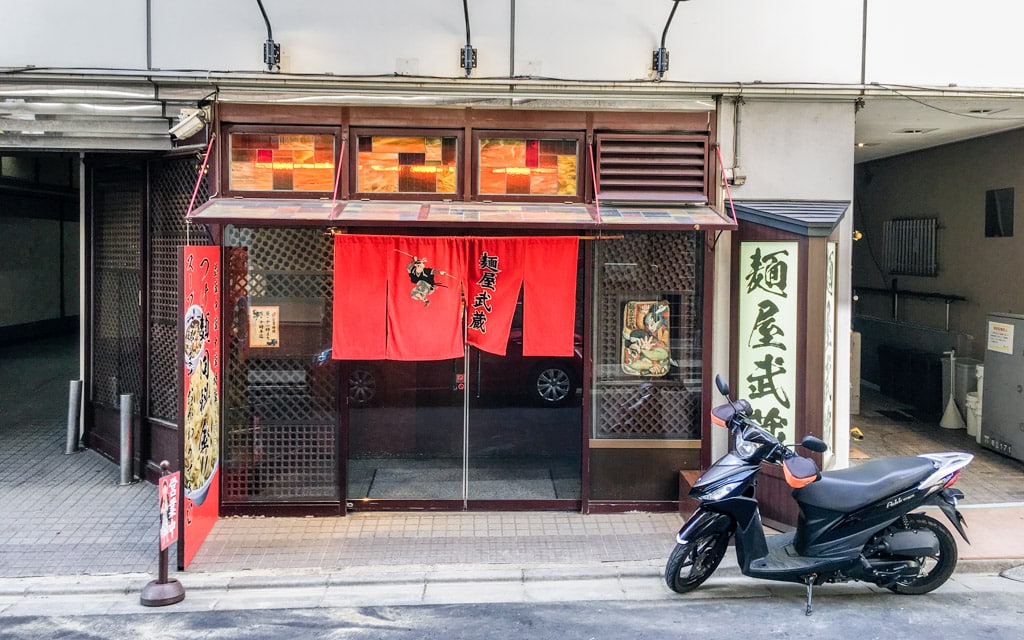
Any visit to Tokyo is not complete without a visit to Menya Musashi Shinjuku Honten, considered by many to be the best ramen in Tokyo, Japan. There are multiple locations across Tokyo. Their flagship store, located on a small street around the corner from Shinjuku Station, is my favorite.
Since opening in 1996, Menya Musashi has won awards and gained an almost cult-like following with both ramen lovers and foodies. At any hour of the day, you can expect to find a line extending out the front door of this small restaurant.
If you are looking for more information about Tokyo and Japan, I highly recommend you pick up a guidebook such as Lonely Planet Best of Tokyo 2020
Table of Contents
Cozy Interior of Menya Musashi Shinjuku Honten
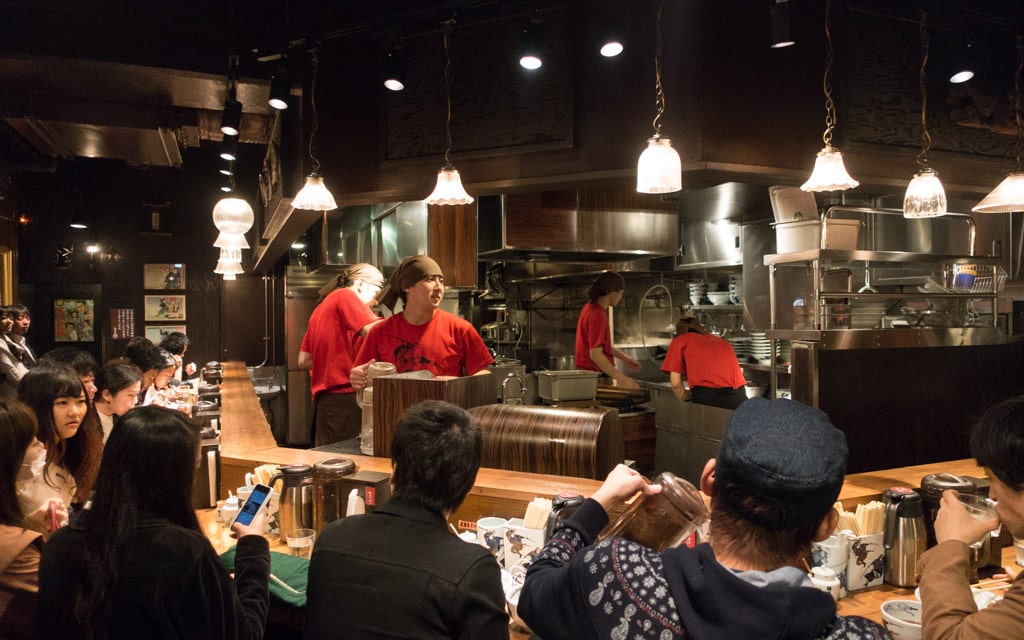
From the outside, Menya Musashi looked like any other ramen shop in Tokyo. When I walked through the door, everything changed.
The restaurant was lively and busy with locals and a few tourists. Everyone seemed to be having a great time. Jazz music was playing lightly in the background.
Menya Musashi was named after the legendary samurai Miyamoto Musashi. Because of this, you will find samurai posters adorning the dark wooden walls throughout the restaurant.
In the kitchen, energetic chefs dressed in red were moving around like a well-oiled machine. Wrapping around the busy kitchen was a long wooden counter. Every seat in the house was taken.
Against the wall, a group of hungry customers were patiently waiting for their turn to be called. The line seemed to move along quickly as guests slurped down their bowl of ramen and moved on.
Open Kitchen with Chefs at Work
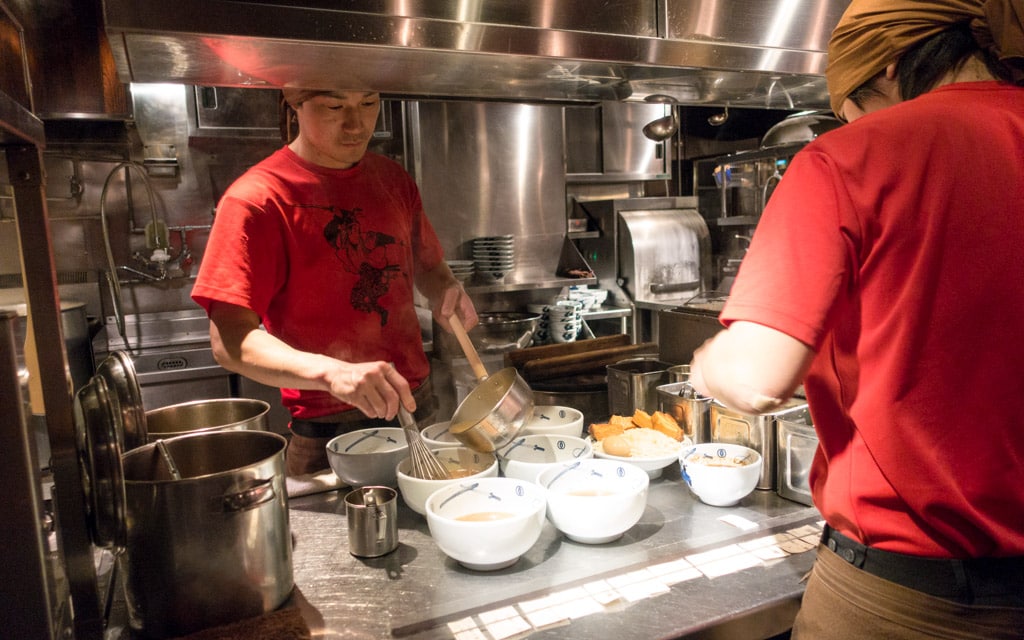
One of the best things about Menya Musashi was being able to watch the chefs do their magic behind the counter and in the kitchen. They were masters at work.
In their red shirts, they seemed to be having a great time working together with remarkable chemistry. They were yelling out orders, cooking noodles, and serving food. Everyone was running around in a beautiful, synchronized way. It was truly entertaining and made the experience special.
Menya Musashi Ramen Menu
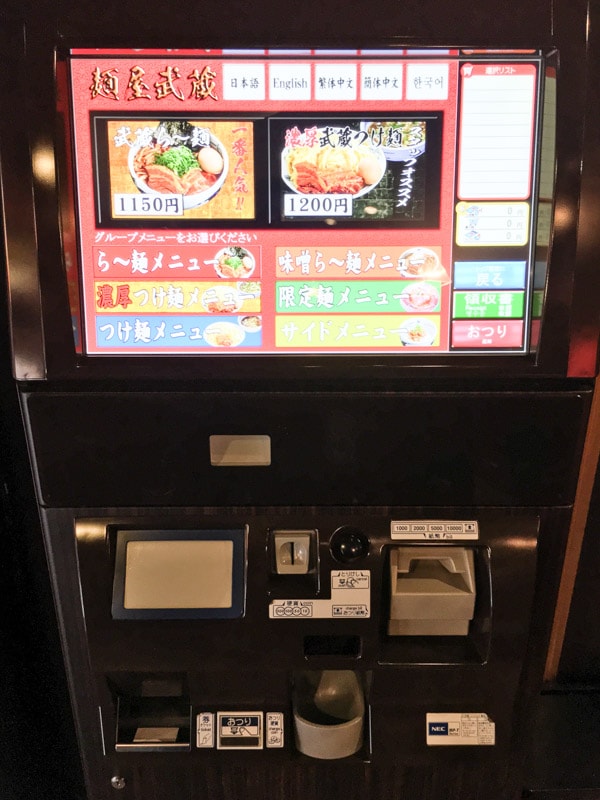
Like most ramen shops in Japan, I had to use a vending machine to place my order. Cash goes in, a ticket comes out.
The vending machine at Menya Musashi was located near the front of the restaurant. In the past, there was no English, only Japanese on the vending machine. This made ordering frustrating for visitors. On my recent visit, the vending machine had been updated with a touchscreen including photos and English descriptions.
The vending machine accepted cash only. After paying, I took my ticket and waited in line. After a few minutes, one of the workers asked for my ticket. He then asked if I wanted the small or large serving of noodles. As both sizes were the same price, and I was starving, I went for the large size.
The menu included ramen, deep tsukemen, tsukemen, miso ramen, limited sales, side items, and drinks.
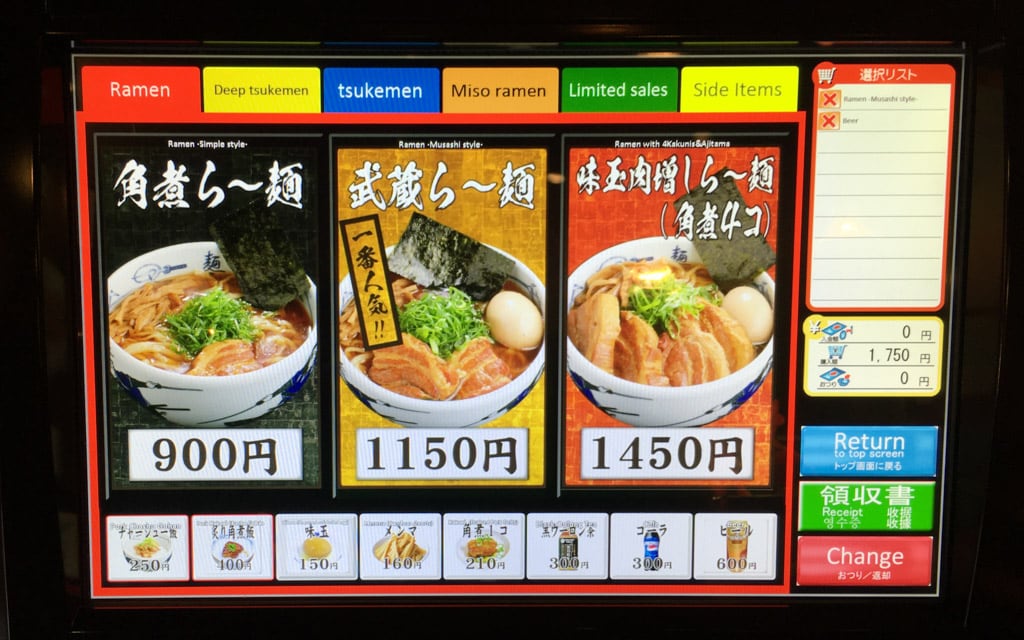
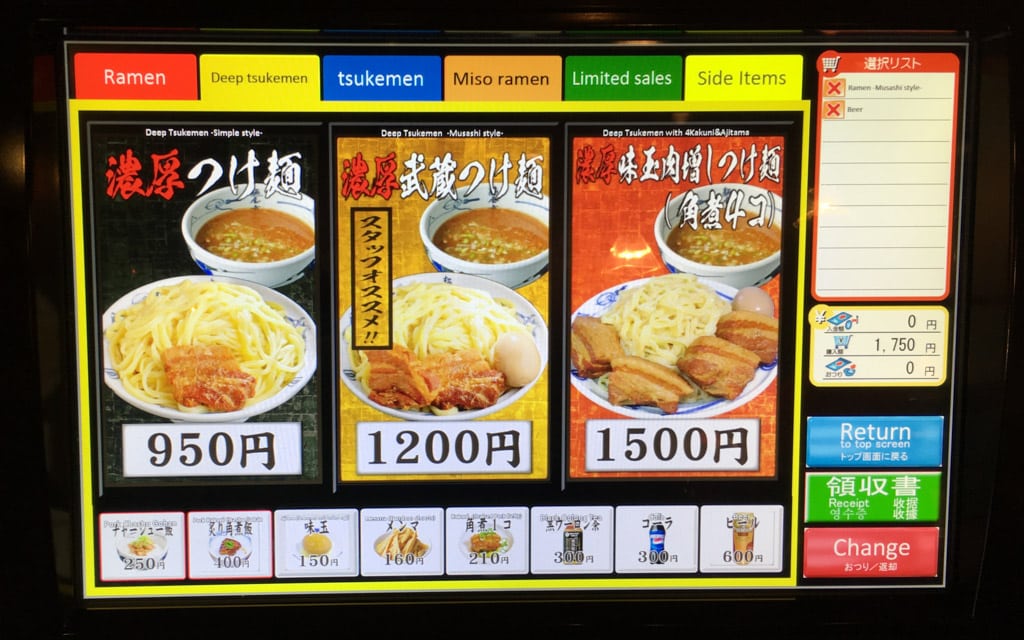
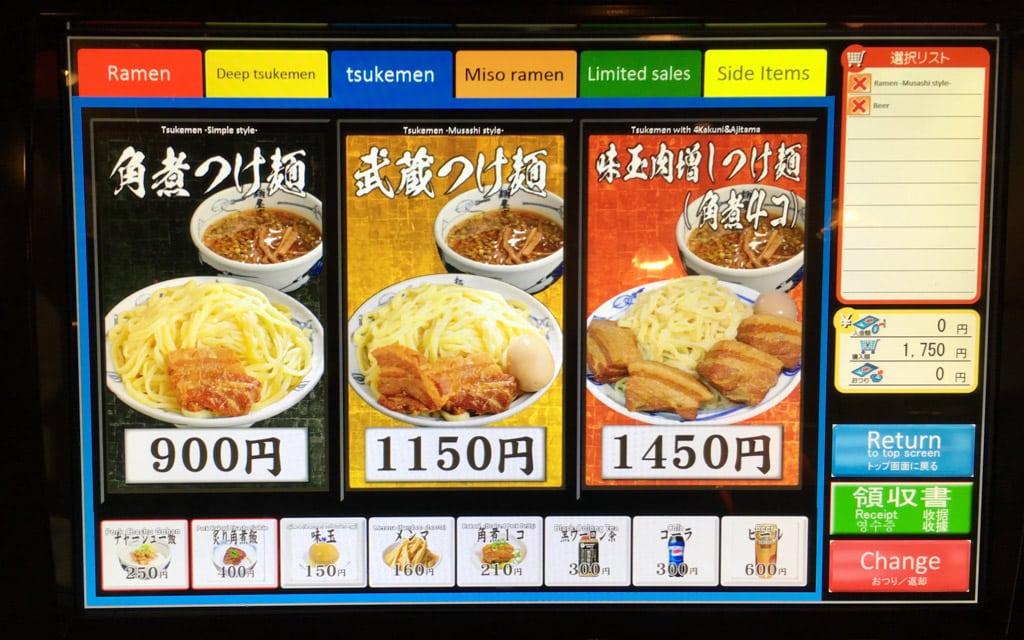
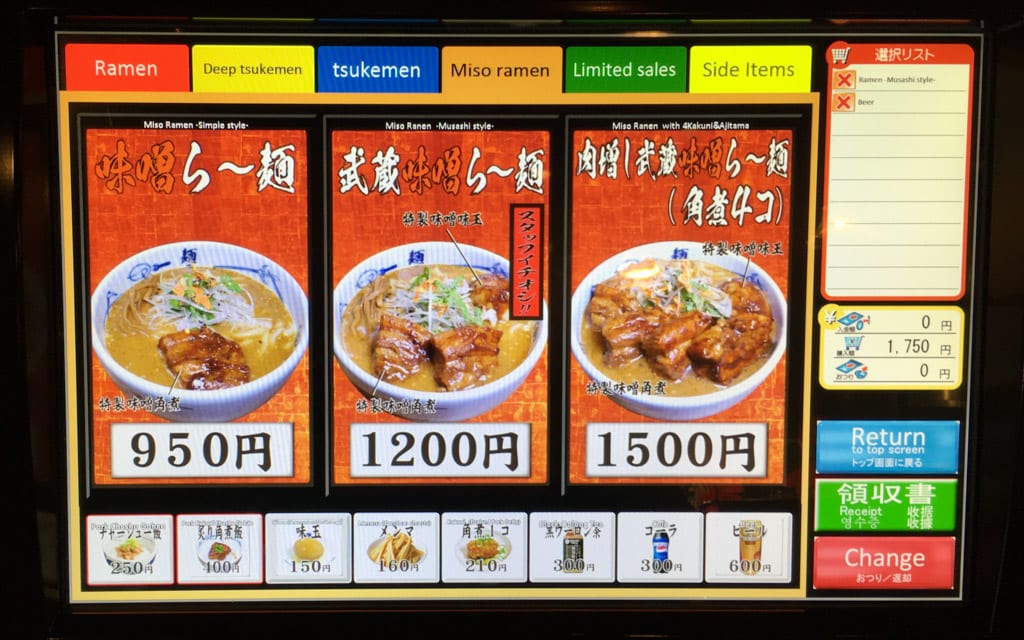
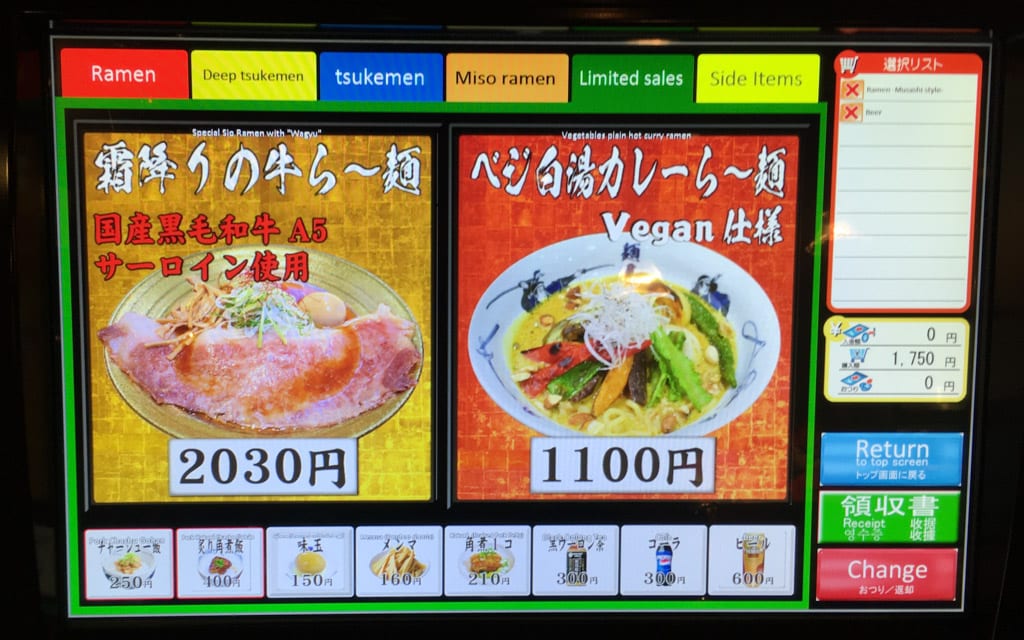
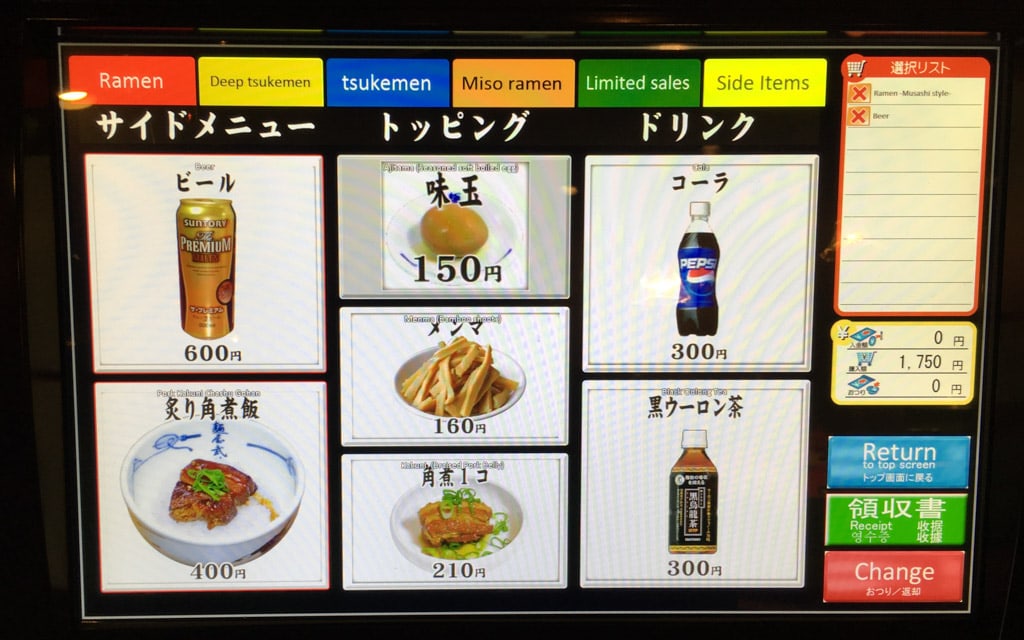
Musashi Style Ramen
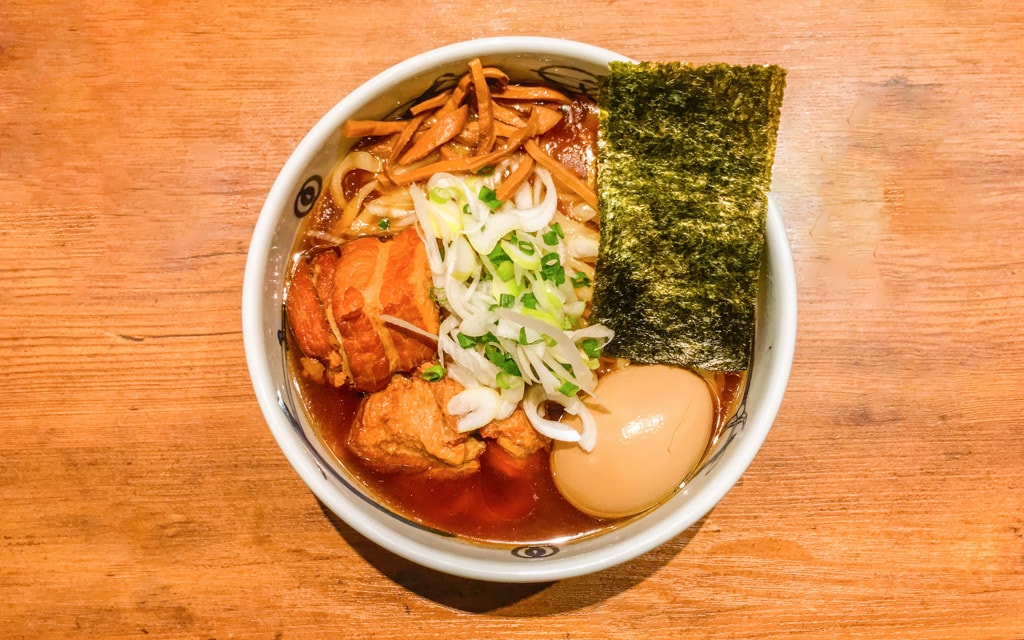
Menya Musashi is really famous for their tsukemen, a type of dipping noodles. Everyone seemed to be ordering it. Since it was a cold day in Tokyo, I decided not to order the tsukemen but instead went for the Musashi Style Ramen (1150 yen or about $10.35).
This ramen consisted of thick noodles, chunks of braised pork belly (kakuni), a seasoned soft-boiled egg (ajitama), and nori (seaweed).
The deep brown colored broth was much lighter than I would have expected. It looked heavy but was surprisingly light though somewhat oily.
What made this ramen so special, and unique, were the flavors of the broth. It was like no other ramen I had on my entire trip to Japan.
In Japan, it is common for the broth of ramen to be pork based. This broth tasted like a mixture of pork and fish. It was salty and had the distinct flavor and aroma of seafood, most likely from bonito flakes or sardines. While the flavors were not overpowering, those who enjoy pork based ramen might not enjoy this ramen as much as I did.
You won’t find thin slices of pork in this bowl of ramen. The thick chunks of braised pork belly, known as kakuni, were seriously thick. This is never a bad thing. I can’t think of any ramen shop in Tokyo that serves such a massive chunk of pork.
The pork belly was braised for hours until tender in a mixture of soy sauce and mirin. This not only made the pork tender but gave it a distinctly sweet, smoky, and salty flavor. It was umami.
The fattier parts of the pork were delicious and just melted in my mouth. This part of the pork was packed with so much flavor. On the other hand, some of the meatier parts of the meat were slightly dry and tough to chew through.
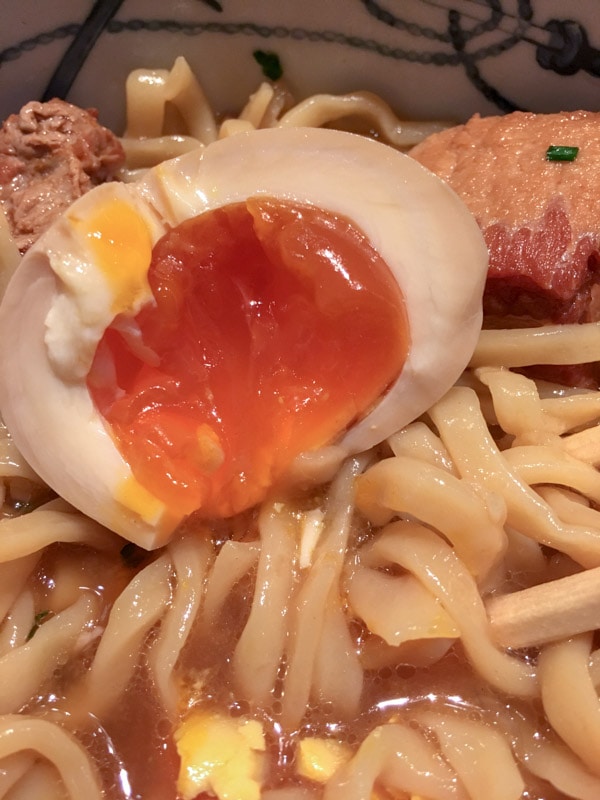
In the bowl was a generous portion of thick and curly noodles. Each bite of the fresh and delicious noodles was chewy but firm. The noodles tasted even better as they soaked up the flavors of the rich, salty broth. The wiggly noodles, thicker than most ramen joints in Tokyo, reminded me of udon or egg pasta.
I don’t know what it is about the eggs in Japan, but they taste better than anywhere else. Much better than I can find back at home. The seasoned soft-boiled egg floating in this ramen, known as ajitama, was no different. The golden creamy yolk of the egg flowed out like molten lava into the ramen. It was cooked perfectly with a rich and slightly salty flavor.
Finishing off the bowl was a piece of crispy, salty seaweed (nori) and crunchy sliced white and green oninos.
Service
While interaction with the staff was limited, I enjoyed watching the show in the kitchen.
Conclusion
What stood out the most with the ramen I had at Menya Musashi Shinjuku Honten was the thick piece of pork and the broth. The pork was flavorful, rich, and packed with umami flavors. The broth was just as flavorful with a unique pork and seafood flavor. While there are many great ramen restaurants in Tokyo, I highly recommend Menya Musashi Shinjuku Honten.
Pros
- Flavorful seafood and pork based broth
- Thick piece of pork
- Watching the chefs prepare the ramen was entertaining
Cons
- Popular, so always expect a line
- No credit cards accepted
Address & Contact
1F K1 Building, 7-2-6 Nishi Shinjuku, Shinjuku-ku, Tokyo
GPS Coordinates: 35.695579,139.698648
Hours
11:00 AM - 10:30 PM
Map
Last Updated on July 9, 2025





